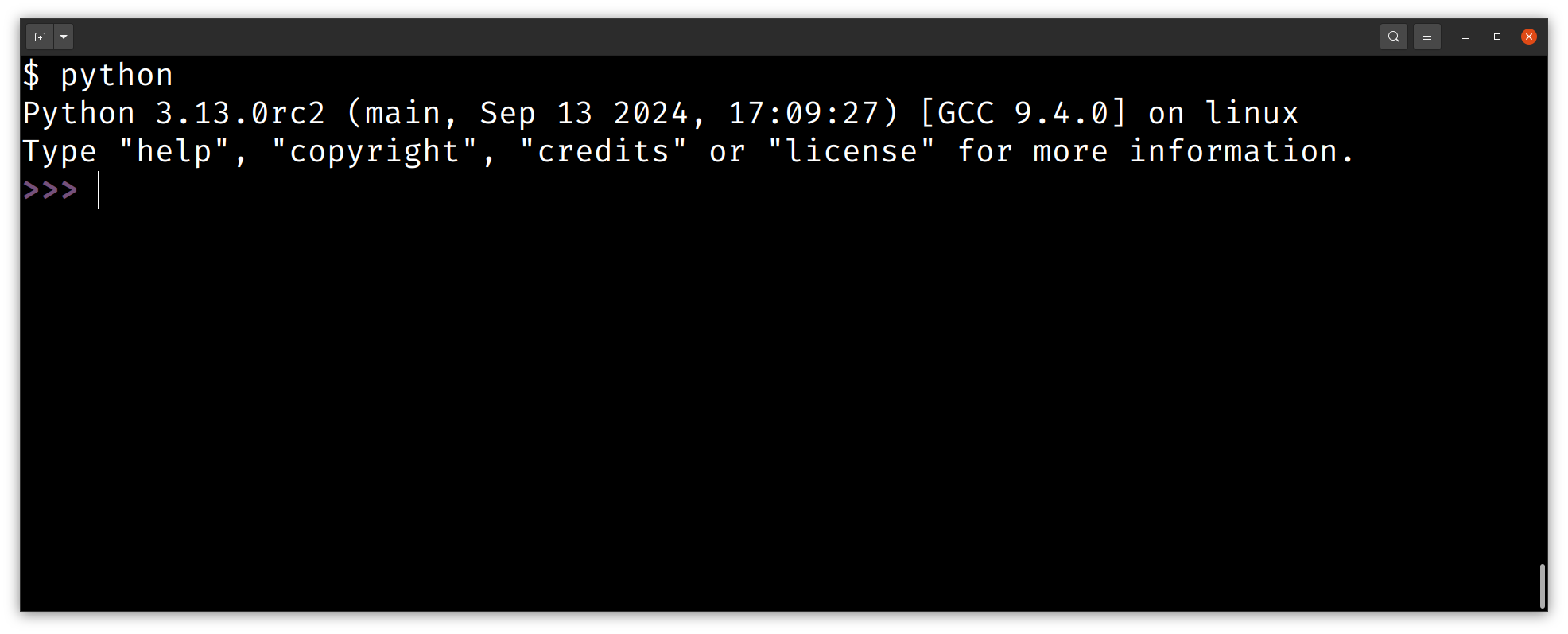Club.noww.in
One of Python’s strong points is its interactive capabilities. By running python you start the interactive interpreter, or REPL, which allows you to perform quick calculations or explore and experiment with your code. In Python 3.13, the interactive interpreter has been completely redesigned with new modern features.
Python’s REPL has remained largely unchanged for decades. Instead, alternative interpreters like IPython, bpython, and ptpython have addressed some of the built-in REPL’s shortcomings, providing more convenient interactive workflows for developers. As you’re about to learn, Python 3.13 brings many significant improvements to the interactive interpreter.
In this tutorial, you’ll:
- Run Python 3.13 and explore the new REPL
- Browse through the help system
- Work with multiline statements
- Paste code into your REPL session
- Navigate through your interpreter history
The upgraded REPL is just one of the new features coming in Python 3.13. You can read about all the changes in the what’s new section of Python’s changelog. Additionally, you can dig deeper into the work done on free threading and a Just-In-Time compiler.
Get Your Code: Click here to download the free sample code that shows you how to use some of the new features in Python 3.13.
A New Interactive Interpreter (REPL) in Python 3.13
To try out the new REPL for yourself, you need to get your hands on a version of Python 3.13. Before the official release in October 2024, you can install a pre-release version. After October 2024, you should be able to install Python 3.13 through any of the regular channels.
A REPL, or a Read-Eval-Print Loop, is a program that allows you to work with code interactively. The REPL reads your input, evaluates it, and prints the result before looping back and doing the same thing again.
Note: To learn about the built-in REPL in Python and how it works in general, check out The Python Standard REPL: Try Out Code and Ideas Quickly.
In any version of Python, you can start this interactive shell by typing the name of your Python executable in your terminal. Typically, this will be python, but depending on your operating system and your setup, you may have to use something like py or python3 instead.
Once you start the REPL in Python 3.13, you’ll see a small but noticeable difference. The familiar Python interactive shell prompt, consisting of three right angle brackets (>>>), is now colored differently from the rest of the text:

The color difference indicates that the shell now supports color. In the new shell, color is mainly used to highlight output in tracebacks. If your terminal doesn’t display color, then the new REPL will automatically detect this and fall back to its plain, colorless display.
If you prefer to keep your interpreter free of color even when it’s supported, you can disable this new feature. One option is to set the new environment variable PYTHON_COLORS to 0:
Setting PYTHON_COLORS=0 disables color in the REPL. If you set the environment variable to 1, you’ll get the colored prompt and output. However, since it’s the default, this is rarely necessary.
Before going any further, you’ll exit the REPL. As you may know, the old REPL, that you’ve used on Python 3.12 and earlier, has been widely commented on for the following idiosyncrasy:
The shell clearly understands your intention to end the session. Still, it makes you jump through hoops and add parentheses to your command. In Python 3.13, the REPL now understands special commands that you can write without any parentheses:
- exit or quit: Exit the interpreter
- help or F1: Access the help system
- clear: Clear the screen
Having these commands more easily available is a small thing, but it removes some friction when using the interactive interpreter. You can still use parentheses and type something like exit() if you prefer. These commands are not reserved though. That means that you could shadow them with variable assignments:
Here you create a variable named exit, effectively disabling the exit command. To end your REPL session, you can either delete the exit variable or use one of the alternative ways to exit the interpreter.
Note: Even with the new improvements, the built-in REPL is not as powerful as some of the third-party alternatives. If you’re already using any of these, there’s no immediate reason to revert back to the standard interactive interpreter.
The main advantage of the new REPL is that it’s installed together with Python. In other words, it’ll always be available for you. This is great if you find yourself in a situation where you can’t or don’t want to install a third-party library.
You can learn more about the alternative interactive interpreters in the following tutorials:
- Unlock IPython’s Magical Toolbox for Your Coding Journey
- Discover bpython: A Python REPL With IDE-Like Features
- Boost Your Coding Productivity With Ptpython
You can also read more about alternative REPLs in the guide to the standard REPL.
Read the full article at https://realpython.com/python313-repl/ »
[ Improve Your Python With 🐍 Python Tricks 💌 – Get a short & sweet Python Trick delivered to your inbox every couple of days. >> Click here to learn more and see examples ]












 English (US)
English (US)